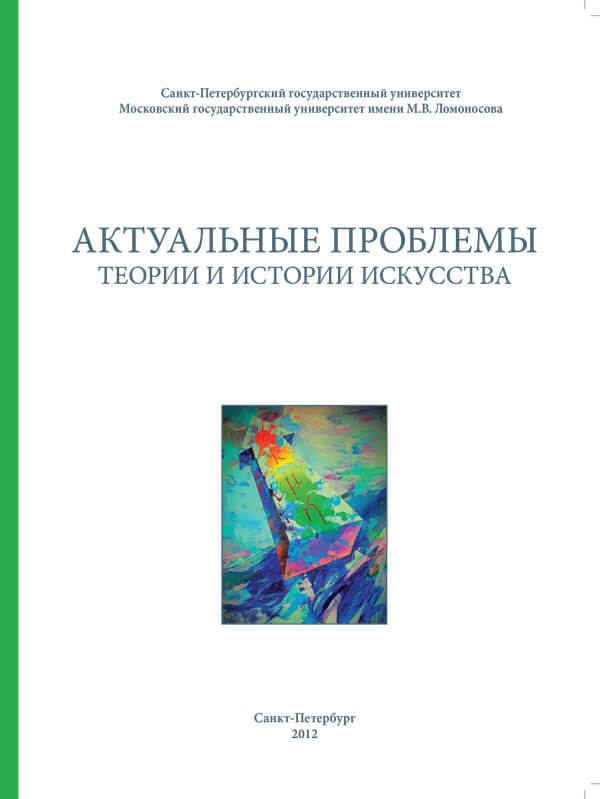The Classical Athens before the “Age of Pericles”: the Lost Monuments of Architecture and Painting
Keywords:
Kimonos, Athens, Painted Stoa, Theseion, Agora, Marathon, Polygnothos, amazonomachyAbstract
The so called «Age of Pericles» is considered to be the time of the highest flourishing of the Athenian classical art. However, not less bright epoch is represented by the decades that preceded the political leadership of Pericles (470–460 BC), when classical Athens was going through its fi rst rise of art and construction activity. This article covers the obscure and lost works of monumental art of this period known only through literary sources and archaeological evidence.
References
Wycherley R.E. The Painted Stoa // Phoenix. 1953. Vol. 7. P. 20–35. Цитируемый фрагмент – P. 20.
Керамика, обнаруженная во время раскопок Пойкиле, датируется 470–460 гг. до н. э. (Camp J.M. The Athenian Agora: Excavations in the heart of classical Athens. London, 1986. P. 10). Масштабы здания, размах живописных работ и содержание самих картин позволяют относить проект ко времени после победы при Эвримедонте, то есть к 460-м гг. до н.э. (см. Castriota D. Myth, ethos and actuality: official art in fifth century B.C. Athens. Madison, Wisconsin, 1992. P. 33; Kebric R.B. The painting in the Cnidian Lesche at Delphi and their historical context. Leiden, 1983. P. 14–15, 37).
Суриков И.Е. Античная Греция: время расцвета демократии. М., 2008. С. 206–258.
О постройках времен Кимона на Агоре см. Camp J.M. Th e Archaeology of Athens. New Haven, London, 2001. P. 63–72.
Относительно датировки битвы при Эвримедонте у историков нет единого мнения в силу недостаточного освещения в источниках хронологии данного периода. В исследовательской литературе они колеблются между 469 и 466 гг. до н. э.
Плутарх. Кимон // Плутарх. Избранные биографии / Под. ред. С.Я. Лурье. Л., 1941.
Там же.
Davies J.K. Athenian propertied families. Oxford, 1971. P. 376–377.
Основная литература о Полигноте и мастерах его круга: Lowy E. Polygnot: Ein Buch von griechischer Malerei. Vienna, 1929; Robert C. Die Nekyia des Polygnot. Halle, 1892; Id. Die Iliupersis des Polygnot. Halle, 1893; Robertson M. Greek painting. Genève, 1959. P. 121–163; History of Greek art. Cambridge, 1975. P. 240–270.
По поводу предлагаемых расчетов длины Расписной стои см.: Shear T.L. The Athenian Agora: excavations of 1980–1982 // Hesperia. 1984. Vol. 53. P. 1–19.
Синесий. Письма // Памятники позднего античного ораторского и эпистолярного искусства / Под. ред. М.Е. Грабарь-Пассек. М, 1964. С. 171–177.
См. Harrison E.B. Pheidias. Th e painters’ world // Personal styles in Greek sculpture / Ed. by J.J. Pollitt, O. Palagia. Cambridge, 1996. P. 16–65. P. 19–20.
Harrison E.B. Pheidias… P. 22.
См. Jeffery L. The Battle of Oinoe in the Stoa Poikile // Annual of the British School at Athens. 1965. Vol. 60. P. 41–57.
Павсаний. Описание Эллады / Под. ред. Е.В. Никитюк. Т. 1–2. М., 2002.
Геродот. История / Пер. и комм. Г.А. Стратановского. М., 2004.
Например, Кинегиру, как известно, отрубили руку секирой, когда он, преследуя персов, ухватился за корабельную корму (Hdt. 6, 114); возможно, именно этот момент был изображен на картине.
Подобные надписи были и в росписях дельфийской лесхи книдян, выполненных Полигнотом, и, очевидно, в других раннеклассических стенных росписях.
Другие античные свидетельства относительно богов и героев, представленных на картине см.: Harrison E.B. The South frieze of the Nike Temple and the Marathon Painting in the Painted Stoa // American journal of archaeology. 1972. Vol. 76. P. 370–378.
Захват Скироса и обнаружение останков Тесея имело место вскоре после взятия Кимоном крепости Эйон в 476–475 гг. до н. э. (см. Meiggs R. The Athenian Empire. Oxford, 1972. P. 68–69).
Плутарх. Сравнительные жизнеописания / Под. ред. С.С. Аверинцева. Т. 1-3. М.-Л., 1961–1964.
Dugas Ch. Revolution de la legende de Thésée // Revue des études grecques. 1943. Vol. 56. P. 1–24; Hurwit J.M. The art and culture of Early Greece, 1100–480 B.C. Ithaca, 1985. P. 311.
Robertson M. Greek Painting... P. 122.
Чашевидный кратер, атрибутированный Мастеру Берлинской гидрии, ок. 460 г. до н. э. (Metropolitan Museum of Art 07.286.86) и кратер с волютами Мастера лохматых сатиров, ок. 450 г. до н. э. (07.286.84).
См. Суриков И.Е. Античная Греция... С. 228.


